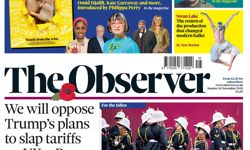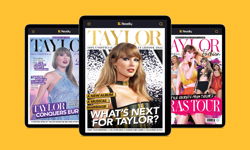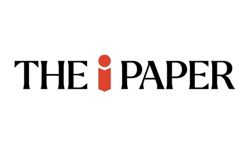Economists love to talk about equilibrium – the perfect state in which all markets balance, and where supply equals demand. Yet, for most of us, far more interesting is the temporary state of disequilibrium, when markets do not balance. Technology change throws up such a situation, and we are experiencing a huge technology change in the online B2B market. As online usage increases, online advertising expands to take advantage of the opportunities presented by the medium.
Today, online advertising comprises around 15% of total UK advertising expenditure (Source: Internet Advertising Bureau / PricewaterhouseCoopers, October 2007 - see www.iabuk.net), but few people expect it to remain at that relatively low proportion. It will grow, for example, because only a third of people connected to the internet currently have a broadband connection, and without broadband, internet usage is inevitably constrained. More importantly, it will grow because online provides far more effective ways of linking information to people’s interests than the powerful but hopelessly untargeted TV advertising: promoting tyres and beer during a football programme is about the limit for personalisation in this medium.
Even though most businesses are now using online to disseminate content every day, there remain many major technical and social shifts that will have a far-reaching effect before we near equilibrium between online content revenue and revenue via other media. Some of these shifts are:
1. Better linking. Advertising provides added value if users can benefit from the information provided. Online links are far more effective than anything TV, radio, or print advertising can provide.
2. Simpler websites. There have been some highly successful initiatives in providing simpler and effective e-services; for example, applying for road tax is now far simpler online than applying in person. In other areas though, online transactions are far too complex for widespread adoption. Until the mechanics of using online become seamless, the opportunities for adding revenue remain limited. If you aren’t convinced, think of the last time you bought something online, and how you could have improved the transaction process – it usually isn’t difficult to think of three or four ways of improving it.
3. Fewer clicks. For directory publishing, there has hitherto been only a limited take-up of the advantages offered by online publishing models. The opportunity is simple: to move closer to the realisation of the user’s request in a single click. This is easier said than done, of course, but Google has provided excellent models for simple and intuitive screen layout (even if by no means the only possible one) by clearly differentiating free and paid listings on the same screen.
Free v paid: How not to do it
The computer magazine market is an example of opportunities being missed. For example, I make regular use of the reviews of hardware in PCPro magazine, which is a clear example of missed opportunities in making effective use of free and paid resources:
1. Although I am a subscriber, PCPro doesn’t link my online subscriber details with my print subscription details: the two databases appear to be entirely separate. The reason for this is partly historical - like many magazines, the PCPro distributor came from a print background. The distributor has no interest in promoting online use of the content, because their business model doesn’t benefit from it. So they make little effort to add value to the online service. If you go online to update your subscription, you can do that, but nothing else. Missing are opportunities to upsell the subscription. One of the fundamental marketing principles, that it is easiest to sell to existing customers, is ignored. For your content, think of points where the distributor and the content owner are separated.
2. The website gives me too much free information. I can obtain all the knowledge I need from PCPro using the free online site. The key "A-list" of the best-value computer kit is available free on the web at all times, and is regularly updated at least as often as the print edition. I have no need to go to the magazine for further explanation, and in fact, the magazine has been superseded by the website. I can (and regularly do) lose my copy of the magazine, but you can’t lose a website.
3. Nowhere on the site are there opportunities provided for me to switch from free to paid. Why not offer, for example, an in-depth review of the item I am about to select? This could be the full review of an article, of which a summary is provided in the free section. Or why not link to another part of the magazine content, the regular PCPro reliability survey? Here is undoubtedly content that I would have difficulty finding free elsewhere on the internet, and I would certainly be interested in paying for a convenient link to it.
Music Week
Music Week is a trade magazine that is read by people in the music business – agents, concert venue operators, record companies, and so on. Perhaps correctly, Music Week reasons there will be no interest to non-subscribers in the content they provide. Whatever the case, I cannot decide for myself, because I cannot access any of the content without subscribing.
I only see the first 20 or so words of each story before having to register, and even then, the full story is often not visible. But the first story I looked at, about Radiohead quitting the EMI record label, was available in a fuller version at several other music industry websites, all freely accessible, thanks to Google. In other words, the free / paid separator is here incorrectly drawn: there’s no point in appealing to exclusivity if there are copies of your content available all over the place. Don’t over-estimate the uniqueness of your content, if it isn’t unique.
Membership associations
Membership associations have few resources to advertise, and yet an association with their brand is coveted by companies in that sector to demonstrate credibility. Do you need a new supplier, but you don’t know any by name? Then choose one that belongs to the relevant trade association. This membership can be shown in an online context, for example by charging manufacturers for a link to or from the relevant association. How the link should be charged is a business decision based on the situation, but it is clear there is revenue to be gained by providing what I call the "credibility link".
Free v paid: How to do it
Credo Reference – from free to paid
Credo Reference is an online aggregator. They license content from third-party content owners, including Bloomsbury and Blackwell, and then sell access to it to libraries. When the company started, as Xrefer, they offered a free and a paid service. The intention was to sustain the free site using advertising, but the content wasn’t strong enough, so the usage and advertising revenue didn’t take off, and after three or four years the free service was quietly abandoned. Yet the paid service has become successful enough to attract hundreds of thousands of users. Nobody could have forecast when the service was launched exactly how the industry would develop, but Credo had the courage to launch with free and paid services – they could not predict, so they tried both. Most importantly, the company was brave enough to reassess its initial strategy and to switch track later.
FreePint – still free but with extensions
FreePint is an innovative free newsletter for the information industry. When launched it was free, sustained by advertising. This free resource then attracted sponsorship, so the sponsor could demonstrate its benevolent desire to assist the industry. Today, FreePint is still free, but has been supplemented by additional paid newsletters (priced from £40 to £280 per year), as well as by additional paid services, such as job searches, with paid adverts. FreePint became successful by establishing the trust of users as a free publication, and then providing paid services that deliver value. The paid services are typically more detailed "how-to" reports that supplement the free content with an immediate business benefit for the purchaser.
Linking
The classic justification for advertising is that the buyer would not otherwise know of the seller’s existence. So eBay, for example, puts buyers and sellers together in a way otherwise impossible: print magazines such as Exchange & Mart have struggled for years with the limitations of print, but online is a far more effective medium for linking buyer and seller. Like many print publications, E&M does most of its business on publication day only, while the web is continuous. For B2B publishers, linking information, as described above, is one of the most powerful benefits. And for all the talk about the wild and wonderful possibilities of Web 2.0, linking offers some very simple and practical opportunities for paid services that can be implemented using very standard technology. If you are holding product directory information, why not charge the manufacturer to provide more links from each item, so users can see other items from this manufacturer? Once a user has got as far as selecting a single product, they may well be interested in seeing other products from that company. It is a simple and logical step for the user, but one of huge value for the company. For example, if a paid magazine reliability survey suggests that Sony is the most reliable manufacturer of laptops, it would be very much in the consumer’s interest to click on "other laptops by Sony" or indeed "other items by Sony" before going anywhere else.
So, combining free and paid content provides a host of opportunities for increasing revenue for content owners. Paradoxically, providing free information offers opportunities for providing paid information as well. Look at your content, and be realistic about what should be free and what paid – and then work out ways of linking between the two.
FEATURE
Mixing free and paid
For specialist information providers, the decision where to draw the line between paid and free content is a delicate one. Give too much away and you risk devaluing your content, but shut too much of it off and you reduce browsing opportunities and you won’t be found by Google and friends. Michael Upshall asks, is there a perfect mix?










